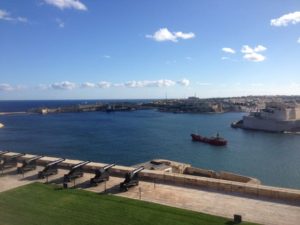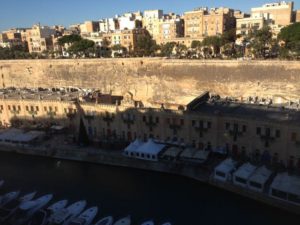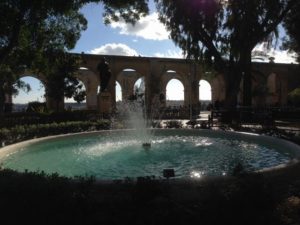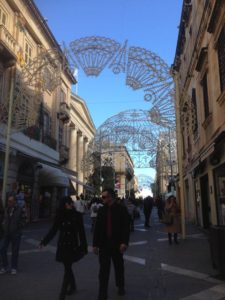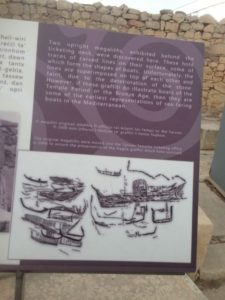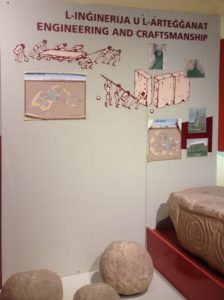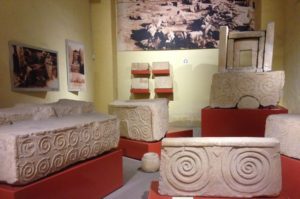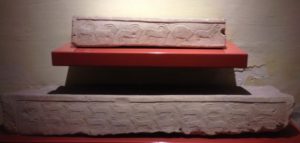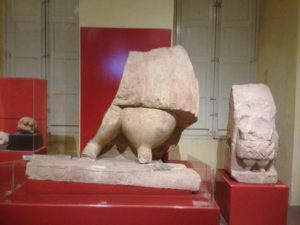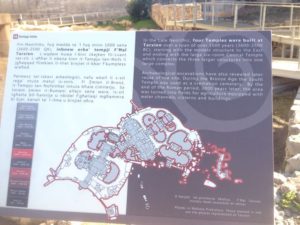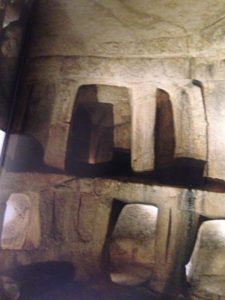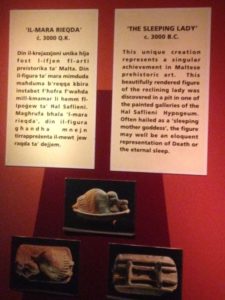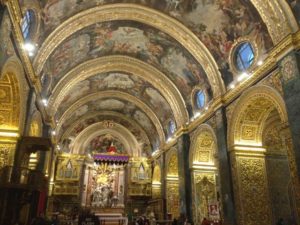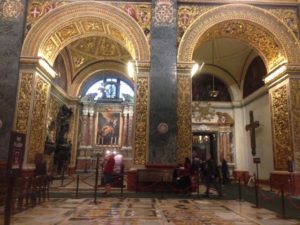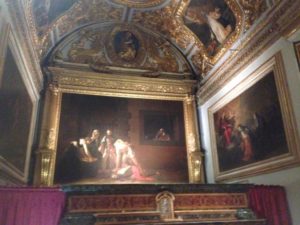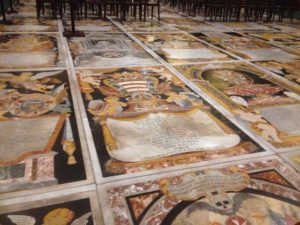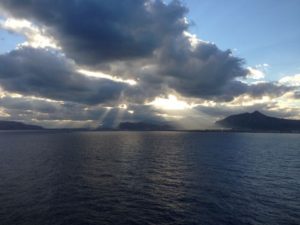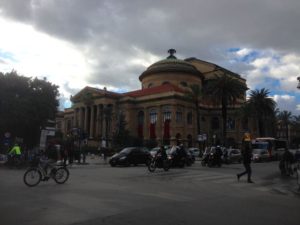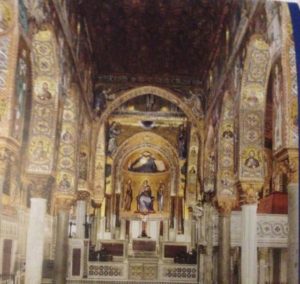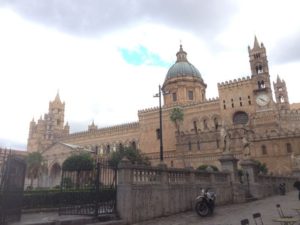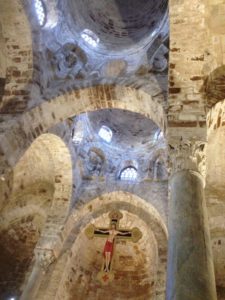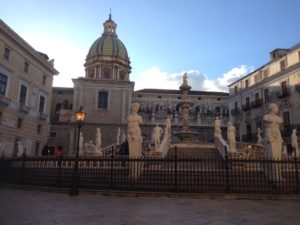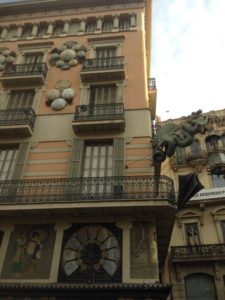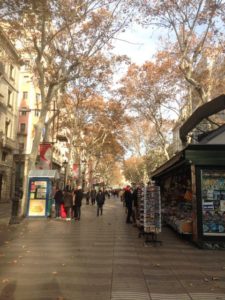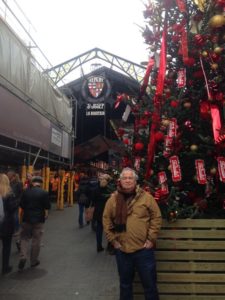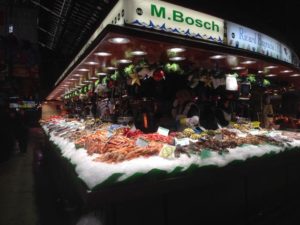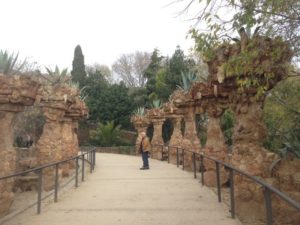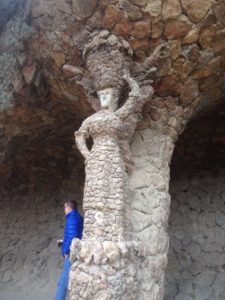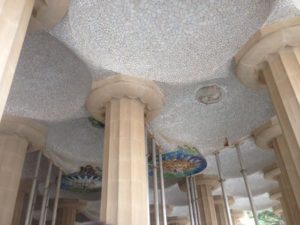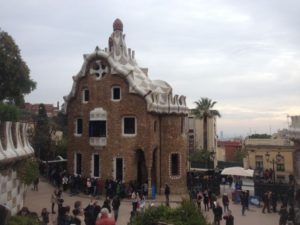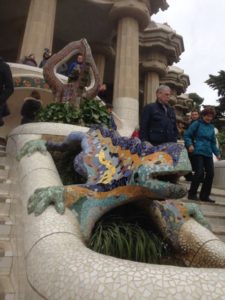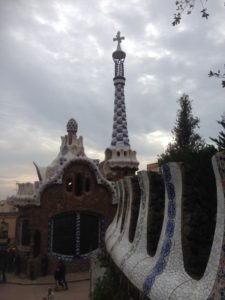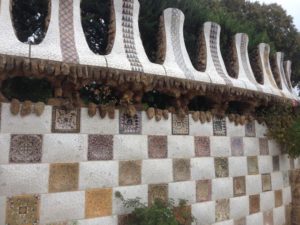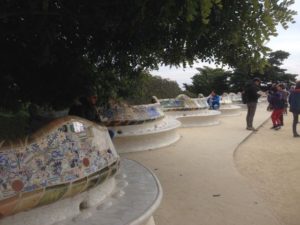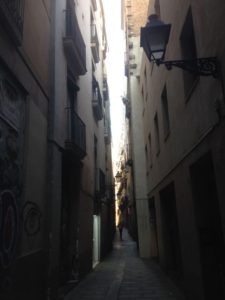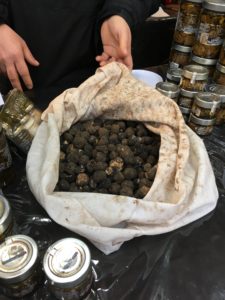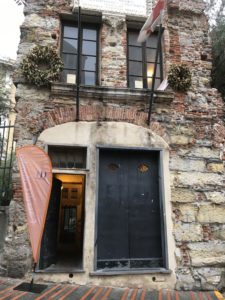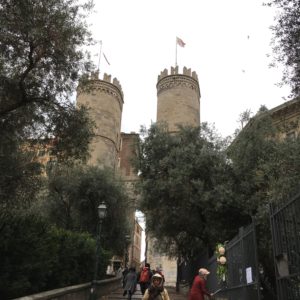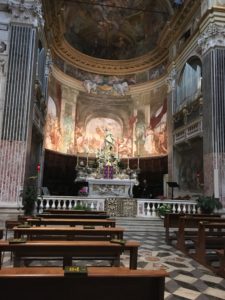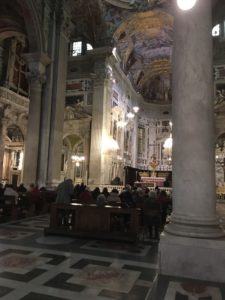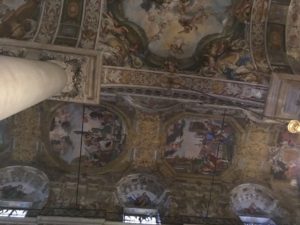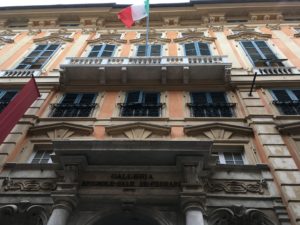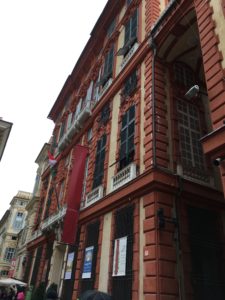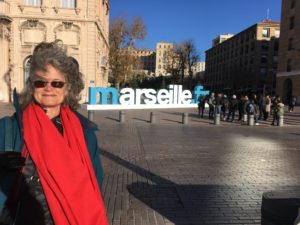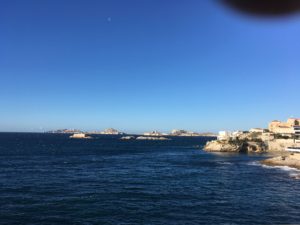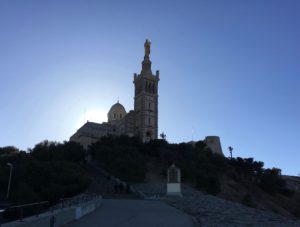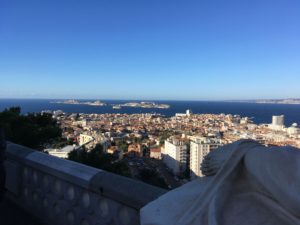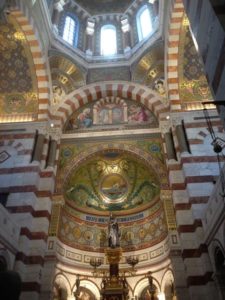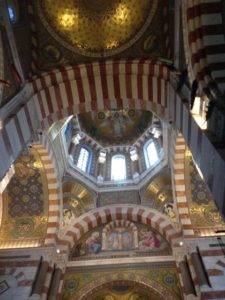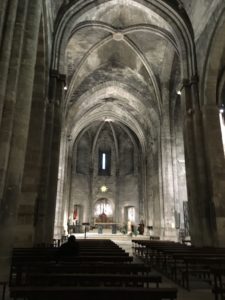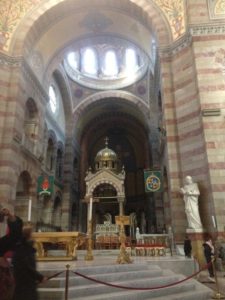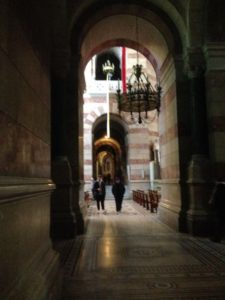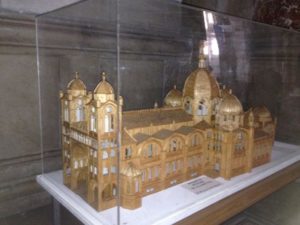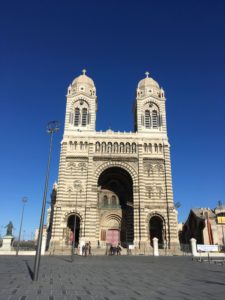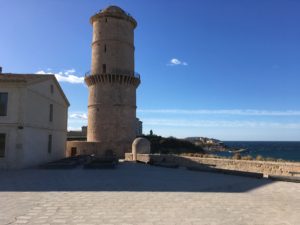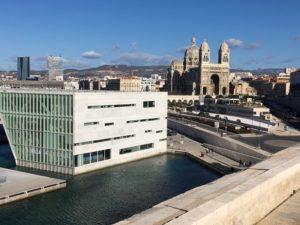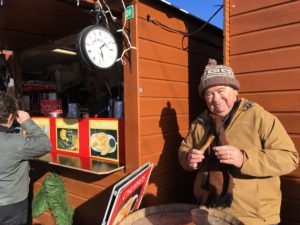I found a great deal ($500) for a 7 day cruise on a new MSC ship, Meraviglia, out of Rome (Civitavecchia) and visiting Palermo, Valetta (Malta), Barcelona, Marseille, and Genoa, all of which we haven’t seen. Finding reasonable airfare was a challenge. Most flights were running around $900, but then I found a Gate 1 package that included airfare, 3 nights in Rome, 2 nights in Florence, 2 nights in Venice and train tickets between them for $1,000. The independent package also includes walking tours in each city. That’s the kind of deal that’s hard to pass up. Gate 1 is great about allowing you to extend your trip, so they were able to book the flight early and book two extra nights in the same hotel in Rome for $100 more, which will give us 5 nights in Rome. The plan is to take day trips from Rome to Ostia Antica and Tivoli to see Villa D’Este and Hadrian’s Villa. We might decide on a day trip to Cortona and Arezzo depending on the weather our energy.
Category Archives: Mediterranean Cruise
Valletta, Malta
We fell in love with Valletta, Malta. On both sides of the port, the city is fortified with beautiful golden sandstone walls, one reason they were able to hold off Suleiman the Magnificent in the siege of 1565.
We got a map from the tourist info right outside the port and were directed to the lift 500 m to the right. The lift rises
six or seven stories to the to the Upper Barrakka Gardens with a beautiful view over the harbor.
The city is very walkable, mostly pedestrian, and was decorated with lacy Chirstmas lights that we wished we could have seen at night.
On our way to St John Co-Cathedral, we passed a shop where we picked up sandwiches for a picnic at the Traxien ruins. The Cathedral unfortunately closed until 11:30 for a private event. We strolled the city some more and then headed to the bus stop where we caught bus 82 to Traxien ( 81, 83, 84, 85 will also get you there) in the town of Paola across the harbor from Valletta. The 25 minute ride took us through more beautiful sandstone monumental buildings and dropped us in a little park in Traxien. Without asking, we never would have found the temple site, down a side street from the park.
Malta has over 300 neolithic temple sites (built between 4000 BC and 3,000 BC. known as the Temple Period), an astounding number for so small an area with a population that they think never rose above 10,000.
The first settlers came to Malta around 7000 BC. Grafitti on one of the Tarxien stones (dates to 4,000 BC) clearly represents boats and is though to be the earliest representation of boats in European prehistory. The boats bear similarities to Egyptian boats depicted around 3000 BC.
The temples complexes were constructed using large blocks of limestone and are similar in shape, with one or more four rounded rooms around a central apse and surrounded by a defensive wall. By comparison the pyramids of Giza were built around 2500 BC.
It is a mystery how so many immense stones, some weight over 20 tons could have been moved into place. One theory is that they used round stones like ball bearings to move giant slabs of stone.
Hal-Tarxien is the closest neolithic site to Valetta (in the town of Paola across the harbor from Valletta ). Built from 45000 BC to around 3600 BC, it is a complex that contains the ruins of four temples, today sheltered under a giant cover to protect the ruins from the weather. Most of the carved stones have been removed to the Museum of Archeology in Valetta, where we saw them later.
Traxien was one of the most elaborately decorated 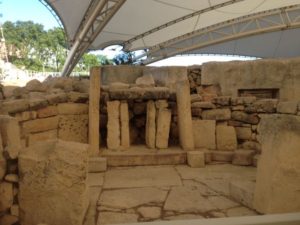 sites.
sites.
The most common motif is the spiral, but panels depicting processions of animals are also common.
One of the chambers contained the lower half of a colossal statue of a corpulent woman wearing a pleated skirt. The original stood two meters high.
Next, we made our way to the Hypogeum of Hal Seflieni, an underground necropolis, the entrance to which is hidden away down a side street. We never would have found it if we hadn’t asked directions numerous times. You have to have a reservation to get in (somewhere around 20 E each, and they recommend getting there 15 min early to keep your spot because they only let ten people in at a time (with a guide and audioguides). They carefully monitor the air quality of the site to protect it from decay because when it was originally opened, too many visitors increased the CO2 and algae began to grow on the walls, prompting them to close the site, restore it and carefully monitor the air quality. If you can possibly see Hal Seflieni when you are in Malta, you should do so.
It is one of the most amazing sites I have ever seen. Cameras are not allowed inside but I bought a book that had photos of the interior.
Seeing Hal Selflieni after seeing Traxien was particularly moving because we could see how the architecture of the necropolis mirrored the architecture of the temples. Hal Selfieni nd sanctuary/necropolis constructed on three levels (Upper, Middle, and Lower levels).
It was discovered in 1902 when someone was digging a cistern to store water and broke into one of the chambers. The chambers were carved out using stone tools and antlers to bore holes in the stone, which would then be chipped away. The upper Level is the oldest (4000BC) was formed from a series of natural cavities which were modified and enlarged. The Middle Level, entirely hewn, appears to be a transition between the surface and the chambers below. The rock has been carved into decorated pillars, doorways, and corbelled ceilings, imitating the megalithic buildings above ground. The burial chambers are niches, windows, and changes in level. Many have spiral motifs painted in red ochre.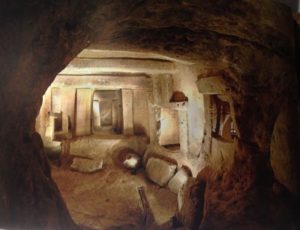
The Sleeping Lady (3000BC), found at Hal Saflieni, depicts a large woman reclining on a bed with her eyes shut and her head resting on her right hand. She wears a long pleated skirt but her breasts are bare. Similar to other figures found here, she may well be a representation of eternal sleep.
With more directions we found the bus stop back to Valetta (any double digit bus will take you back).
Like Palermo, Malta was ruled over by the Phoenicians, the Romans, the Arabs in the ninth century, the Normans in the eleventh. In the middle of the 1500’s it was given to the Knights of St. John, the Knights of Malta. The Maltese falcon was their yearly tribute to the Emperor in return for their control of the island. It remained theirs until Napoleon took it on his way to Egypt in 1798 until Lord Nelson took it back and made it a British colony, which it remained until 1964. Malta still has a strong British presence.
On our return to Valletta, we had time to visit Saint John’s Co-Cathedral, the church of the Order of Knights of St John, whose members contributed vast sums for its ornamentation.
The Knights were noblemen from the most important families in Europe, and their mission was to protect Europe from the attacks of the Ottoman Turks. After successfully defending Malta (ad the rest of Europe) from Suleiman the Magnificent in 1565, they turned Malta into a bastion to protect Europe.
The Baroque cathedral was completely in 1577 and contains the paintings of the best painters of the time, including two large Caravaggios, The Beheading of John the Baptist, and St Jerome, both of which were painted while Caravaggio was in Malta, having escaped a murder charge in Italy. He was later expelled from Malta for another violent attack.
The floors are richly inlaid marble.
Malta is charming and worth a longer stay to explore its beaches and ruins.
Palermo
We arrived in hilly Palermo as the sun broke through the clouds.
Palermo, the capital of Sicily, was first settled by the Phoenicians, followed by the Carthaginians and then the Romans. In the Middle Ages, it was ruled the Greek Byzantines until the Arabs took control in the ninth century, when it became the capital of Sicily and was enriched with palaces, gardens and three hundred mosques. Then the Normans took over, followed by French and Spanish (Aragon) rule until the 1700’s. Garibaldi’s reunification of Italy included Sicily.
The street plan of Palermo has maintained its original Medieval Arab characteristics, with closed alleys and narrow streets. These passageways branch from two principle streets which in meeting, divide the city into four ancient quarters, “quarto canti.” The 4 statues on each corner were commissioned by the Spanish Viceroy in 1611 and represent the four seasons and the four Spanish kings.
We decided we wanted to go to Monreale to see the mosaics in the Duomo, so we made a b-line up to Piazza Independence where we could catch the 398 bus, a 45 minute ride up to Monreale. We had been warned that Palermo had a reputation as the pick-pocket capital, and sure enough, the moment we got on the crowded bus, Steve was bumped and the man across the aisle pointed to the floor and asked if that was his wallet. The cash had been taken from the wallet but luckily nothing else, and luckily the pick-pocket had left the wallet rather than taking it with him. Luckily, Steve didn’t have much cash on him.
Monreale sits on a hilltop above Palermo with beautiful views of the port and coast. The Duomo was spectacular but very crowded.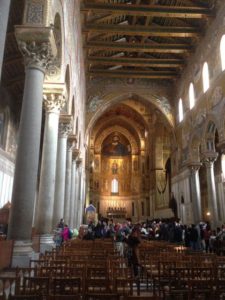
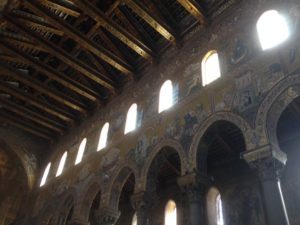
Since the next bus to Palermo wasn’t for an hour, we went to a Van Gogh exhibit, which was very expensive,12 E each, and only had reproductions of Van Gogh’s paintings, so we felt we had been fleeced twice.
Back in Palermo, the Capella Palantina, built in 1130, is just around the corner from the bus stop at Plaza Independencia, costs 7 E but has gorgeous mosaics and was completely empty when we were there.
If I had it to do again, I would skip Monreale and focus on the mosaics in town. The Palacio Reale is only open on weekends, so we missed that.
Next we found the Casa Professa or Chiesa del Gesu, an incredibly ornate Baroque church built by the Jesuits between 1564-1578.
We wandered though the Ballaro, the Arab quarter, finding the market where they were selling fresh vegetables, meat, and fish.
We found the churches of San Cataldo (which opens again at 3) and Santa Maria dell’Ammiraglio (La Martorana) (which didn’t open until 3:30 ). While we waited for them to open Steve found a tiny Indian restaurant where we had an amazing meal of fritters and chicken kebabs for 4 E. The food is cheap but the entrance to churches can be expensive.
San Cataldo, built in 1154, is a tiny, plain Norman church with three red domes.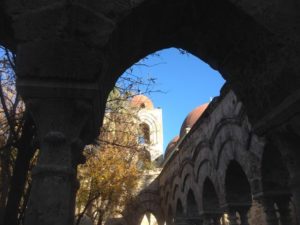
Unfortunately, we had to skip La Martorana because we didn’t have time.
Right beside the two churches is Piazza Pretoria and the “Fountain of Shame” (because it feature naked statues) built in 1555 by the Florentine sculptor Fransesco Camiliani for a Tuscan villa owned by the Viceroy Pedro de Toledo. When his son inherited the villa, he thought the fountain too risqué and sold it to the city of Palermo.
The most unpleasant part of the day (even more than getting pick-pocketed) was getting back onto the boat in a crush of people that took half an hour to get through.
Barcelona
Once again, the tourist info office was conveniently located just inside the port, and we picked up a map and directions of which bus to take to get to Park Guell. Getting from the port to Barcelona was made easy by the blue port bus waiting outside the terminal, which dropped us at the Christopher Columbus statue for 8E round trip for the two.
From there we walked up La Rambla, the wide pedestrian mall that runs to Plaza Catalunia downtown.
We stopped in a food market, Mercado Bocadillo, where fresh vegetables and fish were beautifully displayed.
At the Plaza, we caught the #24 bus (2.15 E each, one way) to Park Guell and were there in by 10:45, a little over an hour after getting off the boat. The next tickets weren’t until 12, so we walked around the gardens.
It was cold and windy and we were glad we had dressed more warmly than we had in our previous ports.
Park Guell is Gaudi’s fanciful creation of what today would be a housing development for the wealthy on a property owned by Eusebi Guell. It was begun in 1900 but abandoned in 1914 as impractical because of lack of transportation up to the site. The city purchased it in 1922 as a park.
Everything from the designs of the walkways to the mosaics that cover every surface are gorgeous. There are only two buildings, one a bookshop, so the park can be seen in a half hour.
We caught the #24 bus back to town and got off at Casa Batillo, Gaudi’s fanciful house in town, but decided not to go in ($25 E each).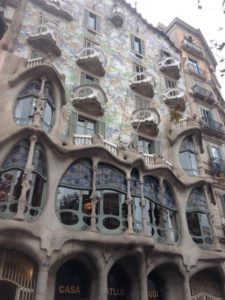
Instead, we explored the narrow winding streets of the old quarter to the left of La Rambla when facing the water.
We happened onto a tiny restaurant, Prado de Flores, where we had the daily special of seafood paella as a first course, followed by roast pork (for Steve) and fish (for me), all huge portions, followed by huge portions of dessert.
Afterward, we wandered the streets and headed back to the ship.
Genoa
We arrived in Genoa to cloudy skies. The walk from the boat to the city center is about 15 min along the harbor.
The first Palazzo we passed was San Giorgio, built in 1260 by Guglielmo Boccanegra, uncle of the first Doge of Genoa.
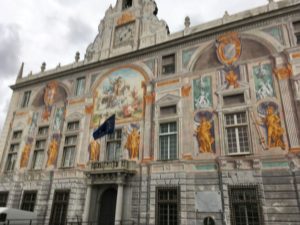 It was built from materials salvaged from the Venetian Embassy in Constantinople. It was later used as a prison where Marco Polo spent several years and dedicated his memoirs to Rustichello of Pisa.
It was built from materials salvaged from the Venetian Embassy in Constantinople. It was later used as a prison where Marco Polo spent several years and dedicated his memoirs to Rustichello of Pisa.
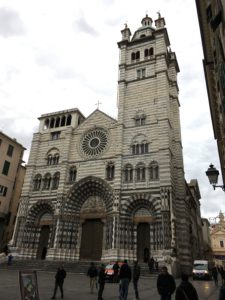 Cattedrale di San Lorenzo was begun in the 5th or 6th century, but excavations show Roman sarcophagi. The current cathedral was built between 12th and 14th centuries, (current walls built in 1155). The naves is Romanesque but the façade is Gothic. The piazza was the only public space in the city during the Middle Ages.
Cattedrale di San Lorenzo was begun in the 5th or 6th century, but excavations show Roman sarcophagi. The current cathedral was built between 12th and 14th centuries, (current walls built in 1155). The naves is Romanesque but the façade is Gothic. The piazza was the only public space in the city during the Middle Ages.
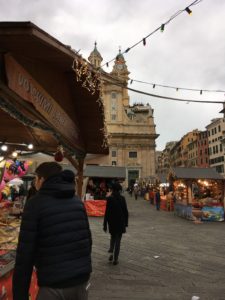 Christmas markets were set up in many of the squares, and we saw lots of fresh truffles for sale.
Christmas markets were set up in many of the squares, and we saw lots of fresh truffles for sale.
Unfotunately, it started to drizzle in mid morning and temperatures were in the forties, so it was chilly, but we very much enjoyed walking the old city with its narrow, curving streets and churches hidden away on almost every squre.
The city walls date back to the 12-17th centuries. We saw the two remaining gates, Porta Soprana next to the Christopher Columbus house.
Palazo Ducale (Palace of the Doges) was the home of the Doges of Genoa. The first parts of the palace were built in 1251 and 1275. The Torre del Popolo was buil tin 1539. Today it houses art exhibits.
On the way up to Via Garibaldi, we passed the Church of San Luca on the Piazza Banchi.
A little further up, we popped in to the church of San Siro and witnessed a service.
On the Via Garibaldi, we saw two palazzo that date back to the mid 16th century that are now art galleries, Palazzo Bianco and Palazzo Rosso
Because of the rain and cold, we headed back to the boat around noon but we were able to see everything we wanted to in three hours of walking.
Marseille
We cruised in to Marseille past dramatic white cliffs.
 With the temperature in the 30’s and the wind whipping, the best option to get into town was the cruise shuttle (15E each). The other option was to walk for 20 min to get the free port but into town. We were dropped a block from the port and walked down to where the hop on and off the Color Bus was loading and decided given the weather to hop on (15E each).
With the temperature in the 30’s and the wind whipping, the best option to get into town was the cruise shuttle (15E each). The other option was to walk for 20 min to get the free port but into town. We were dropped a block from the port and walked down to where the hop on and off the Color Bus was loading and decided given the weather to hop on (15E each).
We drove past dramatic harbor views over the islands, one of which, Chateau D’if is the island where Hugo’s Count of Monte Cristo was imprisoned for fourteen years.
We hopped off at the Basilique Notra Dame de la Garde, perched on the highest mountain overlooking Marseilles.
It was a steep climb up with gale force winds whipping around us, but the mosaics in the church are gorgeous.
Our next stop was the Abbaye Saint Victor built in the 1100’s.
Back at the port, we visited the immense Cathedral of Marseilles with elaborate mosaic floors, red and white striped marble walls, and nave after nave of arches. Each church seems to have an elaborate nativity display.
We visited Fort Saint Jean perched above the harbor across from the very modern museum.
Afterwards we wandered the narrow winding street of the old city, Le Panier, where we bought olive soaps and dried lavender sachets. Back at the port, we wandered through the Christmas market with a Christmas train for kids. We also enjoyed hot chocolate and fresh churros with chocolate.




